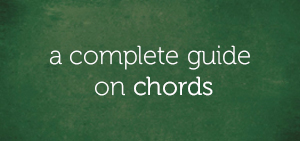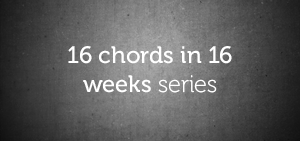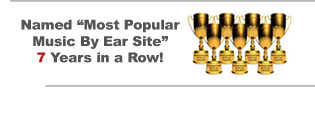If you would love to get some basic information on the term common chord, you are on the right page.
It is a known fact that six out of the seven chords in the major key are common chords. This explains why common chords are sufficient for the beginner to accompany songs on the keyboard with.
But before we go into what we have to cover today, I’ll love to prepare your mind with a review on the concept of triads in tonal music.
Attention: The first segment of this lesson is very important and should not be skipped.
A Review On The Concept Of The Triad
A triad is a collection of three related notes (which may sound pleasant or not) that are played or heard together.
There are two keywords in this definition that must be take seriously:
- Three
- Related
Three. A triad can only have three notes. If more or less than three notes are played or heard, the one of the chord tones are duplicated or omitted.
Related. The relationship between the notes of a triad are based on a scale and tertian harmony. All the tones of a chord are supposed to belong to a particular scale, and have a fixed distance between chord tones.
The C major triad (a classic example of a triad):
…consists of C, E, and G, which are related by scale and tertian harmony.
“It’s Simpler Than It Sounds…”
The chord tones of the C major triad:
…are related by the C major scale:
…where C, E, and G are the first, third, and fifth tones of the scale.
Also, the distance between successive chord tones in the C major triad is based on third intervals (tertian harmony):
C to E (is a third interval):
E to G (is a third interval):
The Fantastic Four Triads
There are four known triad types in tonal music:
- The major triad
- The minor triad
- The augmented triad
- The diminished triad
“Check Out These Triads Sharing The Same Root (C)…”
The C major triad:
The C minor triad:
The C augmented triad:
The C diminished triad:
Time will fail us to deal extensively with triads in this lesson and we’ll be doing so at the expense of our focus in this lesson, which is on common chords.
So, let’s proceed to the next segment to learn about common chords.
“What Is A Common Chord?”
A common chord is a chord that is shared by more than one key.
Attention: All common chords are triads but NOT all triads are common chords. So, keep in mind that common chords are basically triads.
One of the characteristics of a common chord is that the distance between its first and fifth chord tones must be a perfect fifth interval. Let’s look at the two triads that are also known as common chords.
Common Chord #1 – “The Major Triad”
The major triad is a common chord because of the perfect fifth interval between its first and fifth tones. Using the C major triad as an example:
…you can clearly see the perfect fifth interval between the first and fifth tones (which are C and G):
Also, the C major triad (just like every other major triad):
…is a common chord because there are two other keys where the C major triad is a scale tone triad:
In the key of F major:
…the C major triad:
…is the 5-chord.The C major triad:
…is also the 4-chord in the key of G major:
So, the C major triad is a common chord in the following keys: C major, F major, and G major (and their relative minor keys).
Common Chord #2 – “The Minor Triad”
Between the first and fifth tones of the C minor triad:
…(which is C and G):
…is a perfect fifth interval.
Therefore, the minor triad is also a common chord; just like the major triad.
The C minor triad:
…is a common chord in the following major keys:
Eb major:
Ab major:
Bb major:
…and their relative minor keys as well:
C minor:
F minor:
G minor:
A Short Note On Diminished And Augmented Triads
There are two triad types that don’t have the perfect fifth interval: the diminished and augmented triads.
The C diminished triad:
…derives its name from the diminished fifth interval between its first and fifth chord tones (C and Gb respectively):
The C augmented triad:
…has the augmented fifth interval (“C-G#”):
…as one of its intervallic components.
So, diminished and augmented chords are NOT common chords
Final Words
All common chords are triads but not all triads are common chords.
We’re only getting started with common chords in this lesson. In a subsequent lesson, we’ll be exploring the common chords in the major and minor key and how they can be mastered.
See you then!
Chuku Onyemachi
Latest posts by Chuku Onyemachi (see all)
- The Formation Of Diminished Seventh Chords Used To Be Challenging Until I Did This
- How To Form Seventh Chords In Two Shakes Of A Dog’s Tail Using Third Intervals And The Circle Of Fifths Chart
- I Played The 13sus4 Chord And This Happened…
- How To Build Seventh Chords Like An Architect Using “Foundation And Structure” Concept
- This 4-Week Plan Will Help You Master All The Major Scales







Comments on this entry are closed.